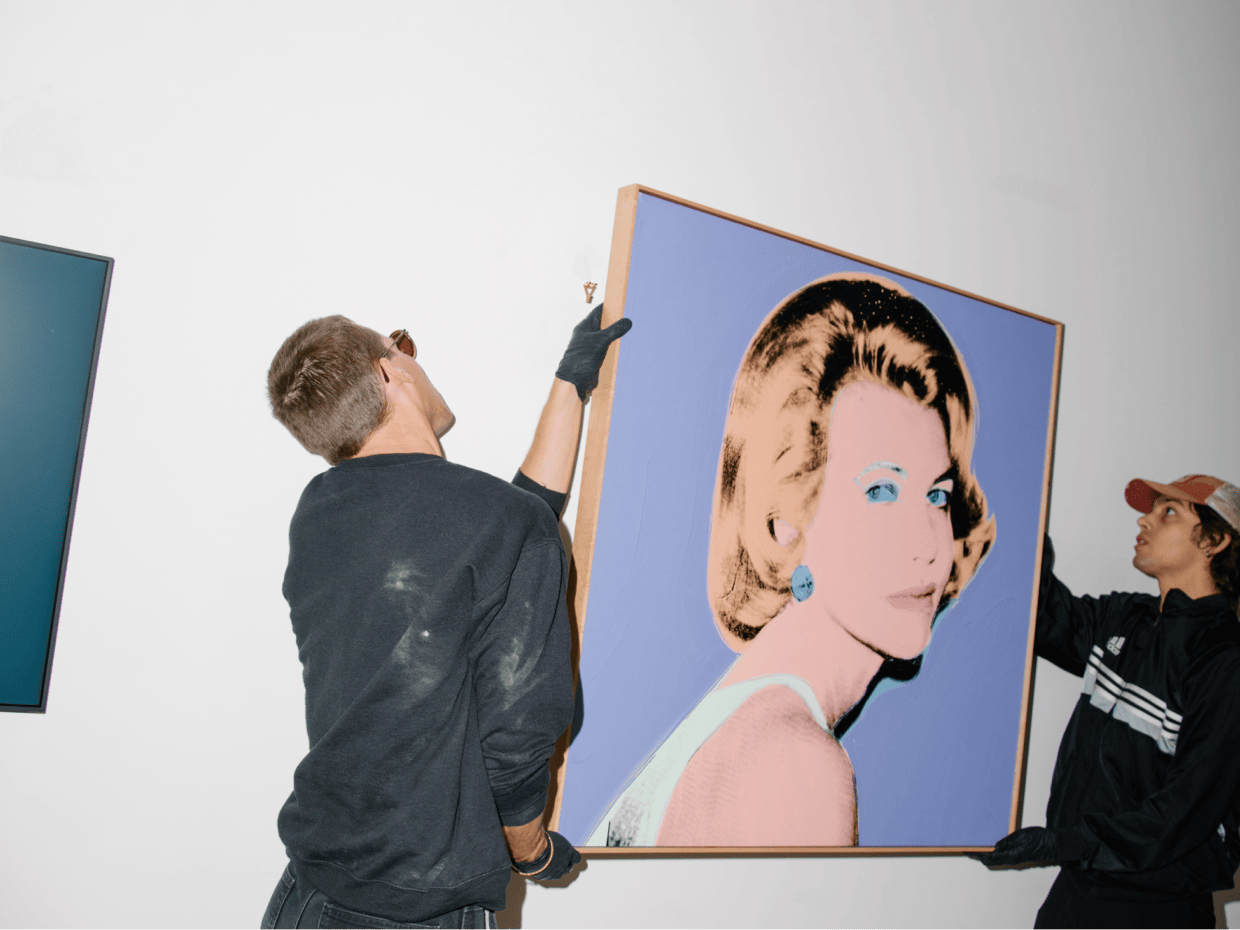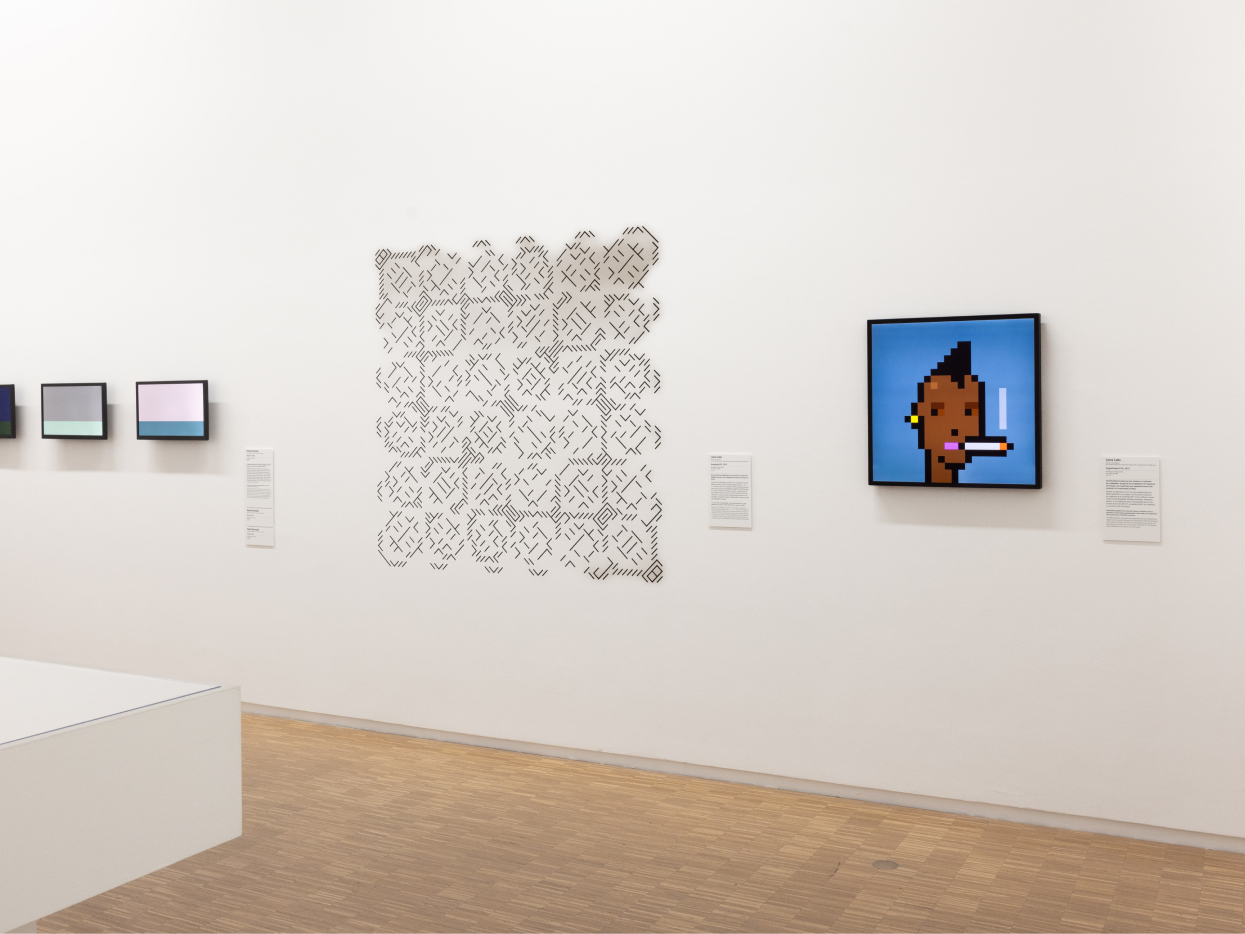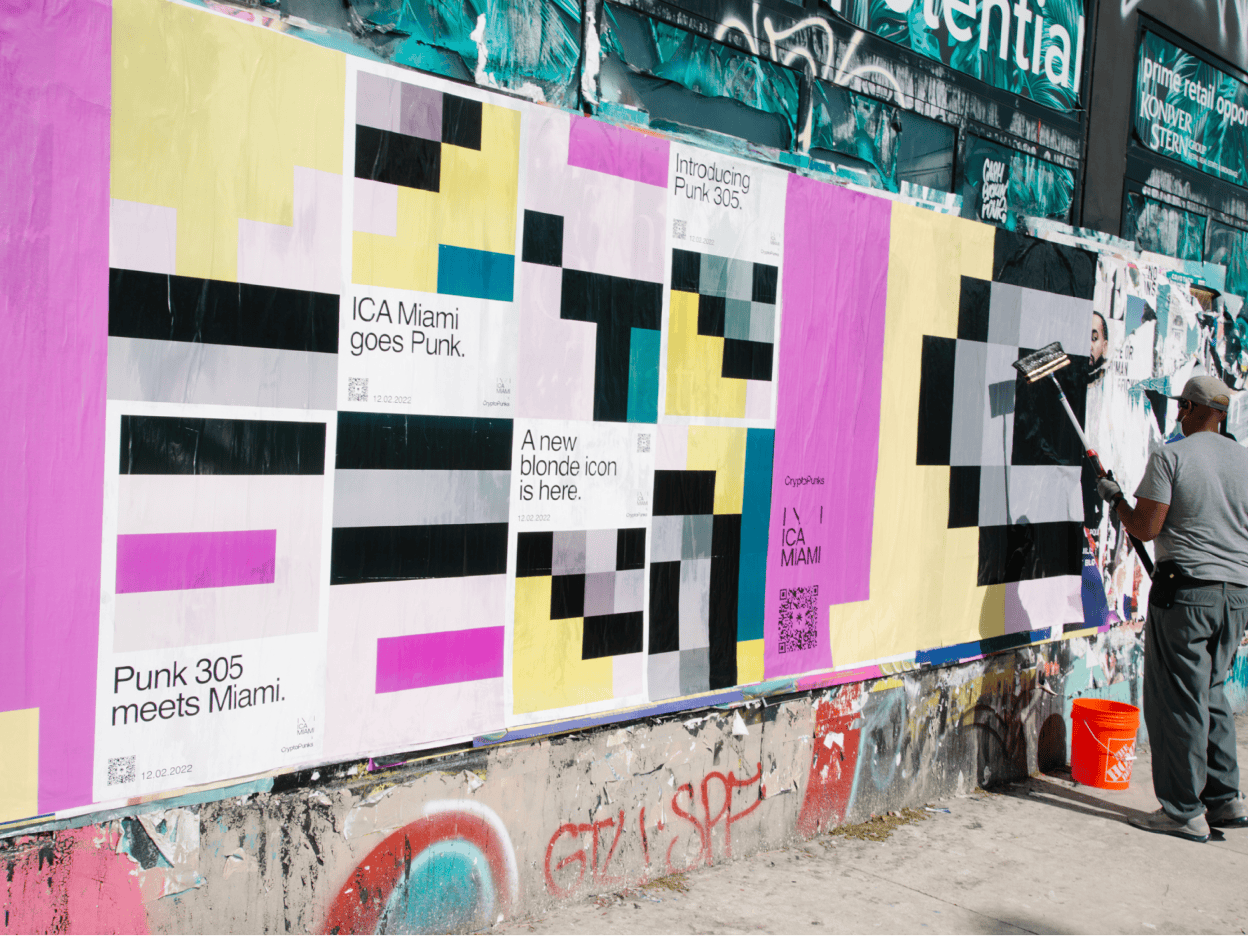Punks Legacy Project
Continuing a legacy
Warhol. Koons. Hirst. Punks. The collection that catalyzed the crypto art movement is heading to the world’s top contemporary and modern art museums. Launched in November 2022 with the announcement of its inaugural donation to the ICA Miami, this initiative oversees the donation and installation of CryptoPunks in museums’ permanent collections, supplemented by education in web3, crypto security, and NFT best practices. Beyond aquistions into permanent collections, the Punks Legacy Project opens a dialogue with museum visitors — and extends an invitation to imagine what’s possible at the intersection of art and technology
New media art emerged conceptually in the mid-1960s as access to computers grew, championed primarily by trained technologists Allan Kaprow, Frieder Nake, and the EAT (Experiments in Art and Technology) group. Even in its infancy, the idea of ‘digital art’ was unbounded - representing any creative practice that incorporated technology into its process or presentation. By the ‘80s, the category had been formalized and popularized by artist Harold Cohen, who developed AARON, a groundbreaking computer program that could draw. It wasn't long before artists like Andy Warhol and Keith Haring began experimenting with digital art — both created digital drawings on Amiga computers gifted to them by author and psychologist Timothy Leary throughout the ‘80s, saving them to floppy disks.
From there, the digital medium innovated as rapidly as the technology behind it, which is to say, very rapidly. One of the first viral videos ever - the 3D “dancing baby” (also known as "Baby Cha-Cha" or "the Oogachacka Baby") - was created in 1996 with the tool 3D Studio Max, originally released in 1990 and still used today (now Autodesk 3ds Max). At that time, Adobe Flash was the go-to for creating animations and games in the early days of the internet. And sites like deviantART and Behance popped up in the early 2000’s, giving artists a way to share their work online.
The creation of cryptocurrency in the 2010s created room for yet another new expression of digital art: non-fungible tokens (NFTs). Putting digital art on the Ethereum blockchain gave artists and collectors alike a way to track and verify ownership of digital artworks, and opened up new possibilities for interaction between artist and collector, collaboration between artists, and revenue streams for creators in the form of creator royalties. (Those early Warhol and Haring drawings saved on floppy disks? Those recently made their debut as NFTs at Christie’s.)
Launched purely as a social experiment, the CryptoPunks were released to the public on June 23rd, 2017 and kicked off a ‘digital revolution’ that would shift our understanding of art, its ownership and its market value. As one of the earliest projects minted on the Ethereum blockchain, CryptoPunks are the “proto-NFT.” A living art and technology experiment, the new model of on-chain art ownership was revolutionary, enabling direct, transparent transactions between collectors and artists.
Equal parts art, graphic design, technology, and radical communal project, Punks are unconstrained by traditional art trading and subvert traditional art aesthetics. And yet, the traditional art world embraced them in groundbreaking fashion — In May 2021, as part of Christie’s prestigious 21st Century Evening Sale in New York, nine CryptoPunks sold for $17 million dollars.
More importantly, the imprint Punks have left on culture eclipses any sales numbers — they represent a futurist mentality about digital art and connote an early adoption of crypto’s potential. Since launching, CryptoPunks have become the blueprint for the thousands of on-chain art projects that have followed; its artistic technique and driving mission are a model for the category.
The Punks speak to our ever-expanding digital lives. It is only natural, then, that in thinking about the future, Punks are considering how to further innovate, bridging this digital medium with existing cultural hubs and institutions. Firmly rooted in an ethos of anonymity, decentralization, and community, CryptoPunks continues to rewrite the narrative of what can be considered art.
Get Involved
If you represent a museum interested in an exhibition or acquisition, please email punks@nodefoundation.com.





